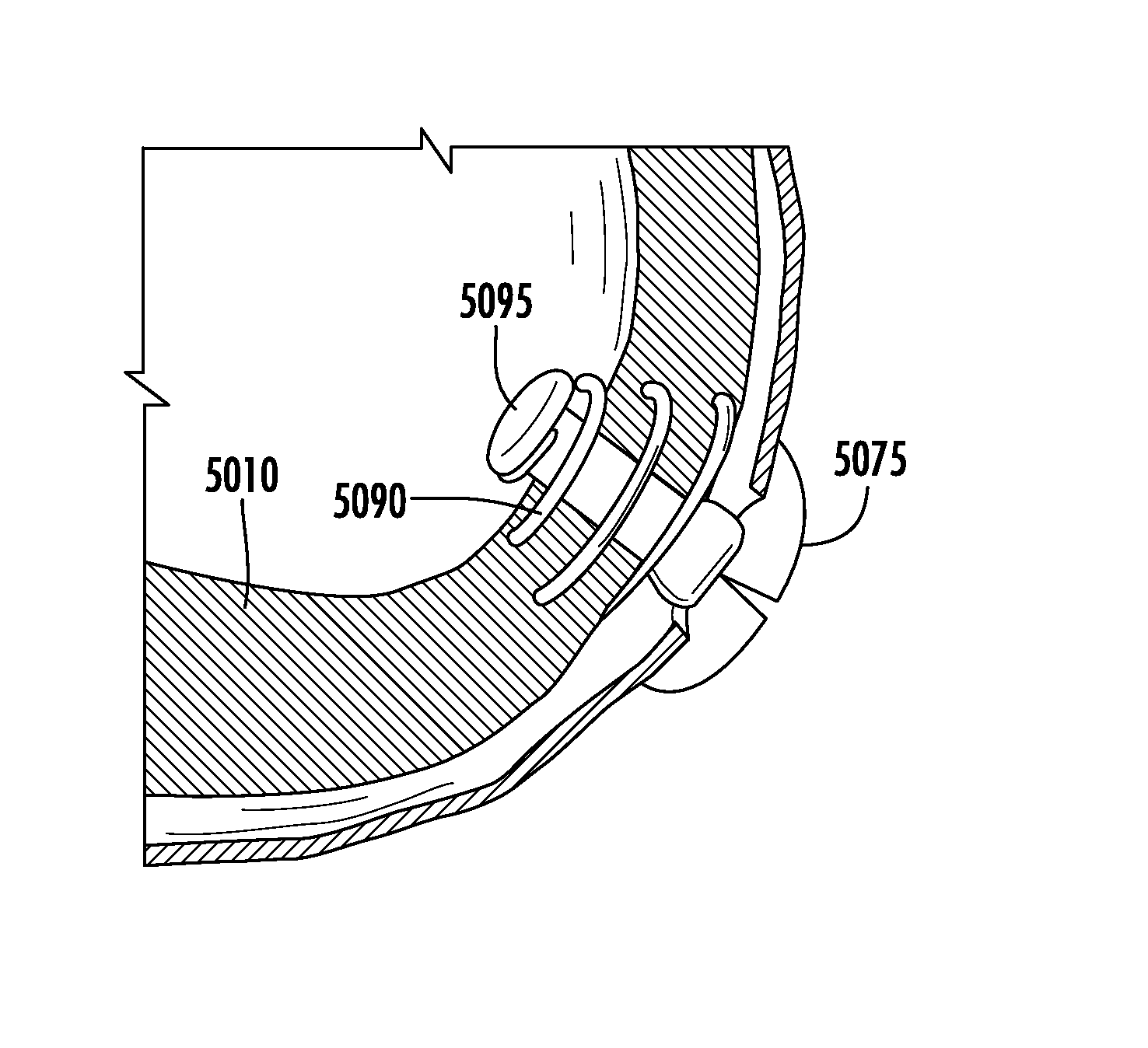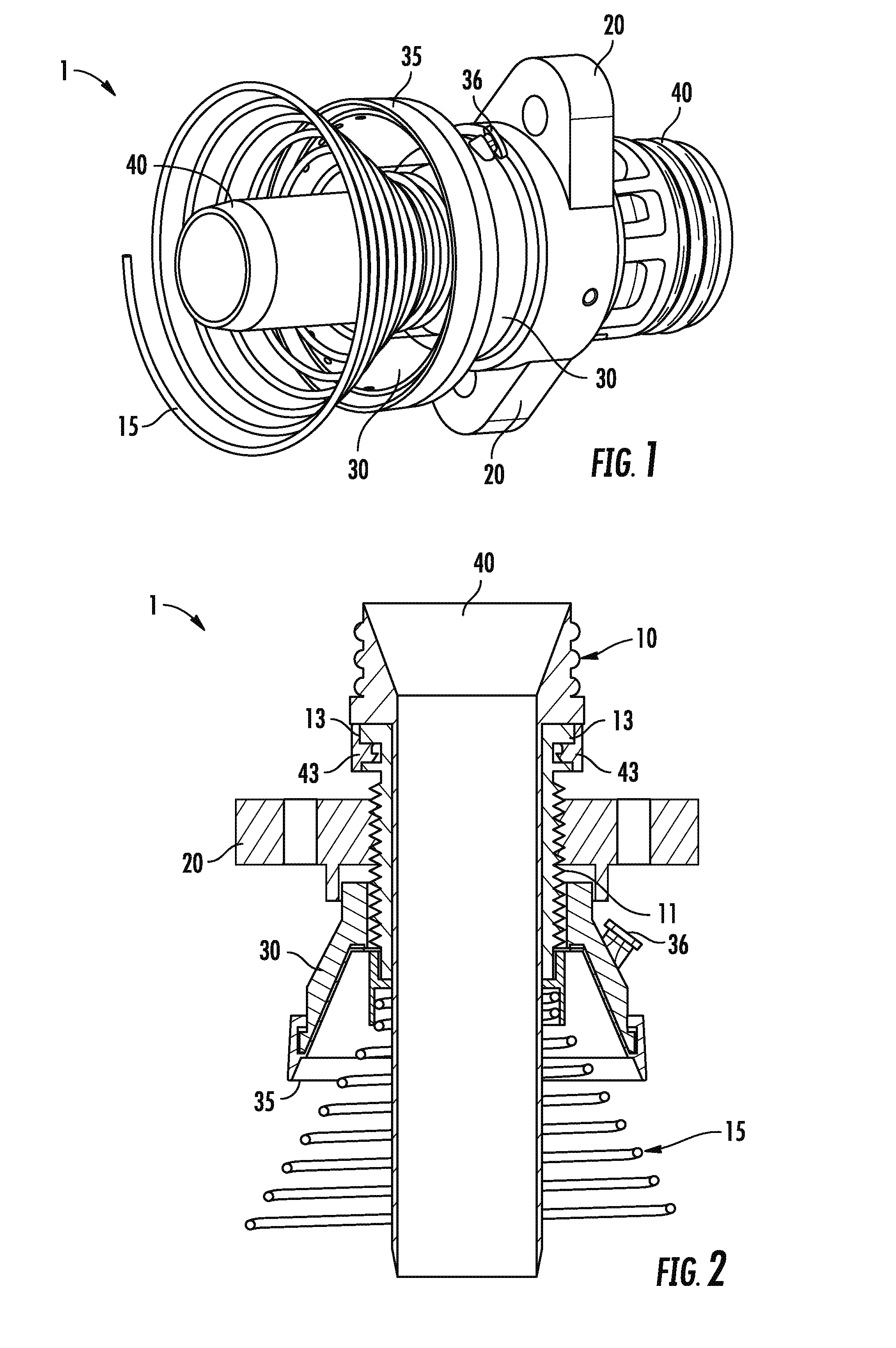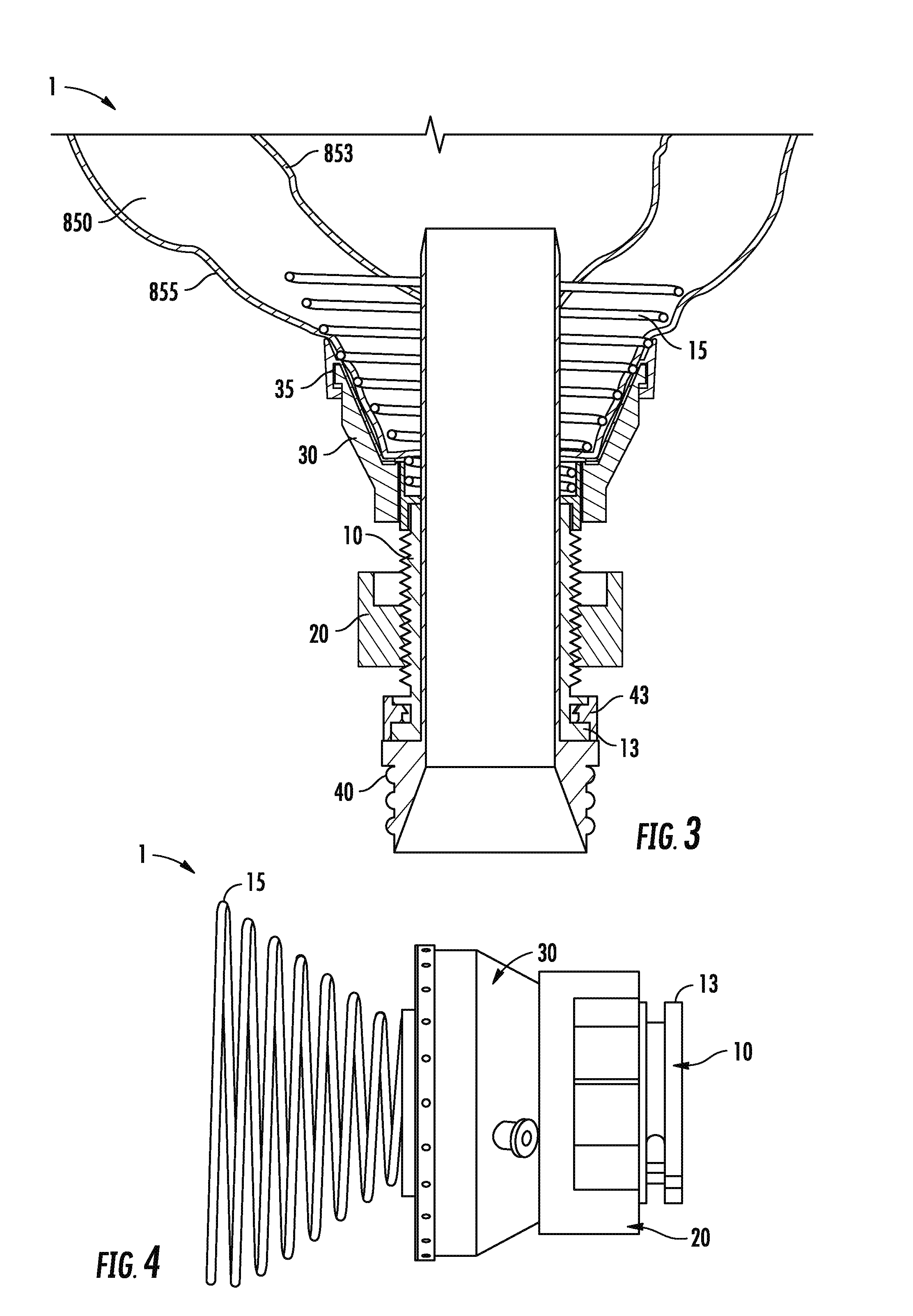Systems and Methods for Percutaneous Access, Stabilization and Closure of Organs
a technology of percutaneous access and organs, applied in the direction of staples, nails, diagnostics, etc., can solve the problems of inconvenient operation, inconvenient operation, and inconvenient operation of percutaneous access and other problems, to achieve the effect of improving the ease and safety of conduit insertion, facilitating the operation and facilitating the removal and retrieval
- Summary
- Abstract
- Description
- Claims
- Application Information
AI Technical Summary
Benefits of technology
Problems solved by technology
Method used
Image
Examples
Embodiment Construction
[0084]The present inventions now will be described more fully hereinafter with reference to the accompanying drawings, in which some, but not all embodiments of the inventions are shown. Indeed, these inventions may be embodied in many different forms and should not be construed as limited to the embodiments set forth herein; rather, these embodiments are provided so that this disclosure will satisfy applicable legal requirements. Like numbers refer to like elements throughout. The singular forms “a,”“an,” and “the” include plural referents unless the context clearly dictates otherwise.
[0085]Certain embodiments of the invention provide devices, methods and systems for using a conduit device through a tissue wall of a patient, comprising: an outer conduit lumen; an inner conduit lumen adapted for insertion at least partially through the outer lumen; an attaching device in communication with a distal end of one of the outer lumen or the inner lumen, wherein the attaching device is ada...
PUM
 Login to View More
Login to View More Abstract
Description
Claims
Application Information
 Login to View More
Login to View More - R&D
- Intellectual Property
- Life Sciences
- Materials
- Tech Scout
- Unparalleled Data Quality
- Higher Quality Content
- 60% Fewer Hallucinations
Browse by: Latest US Patents, China's latest patents, Technical Efficacy Thesaurus, Application Domain, Technology Topic, Popular Technical Reports.
© 2025 PatSnap. All rights reserved.Legal|Privacy policy|Modern Slavery Act Transparency Statement|Sitemap|About US| Contact US: help@patsnap.com



